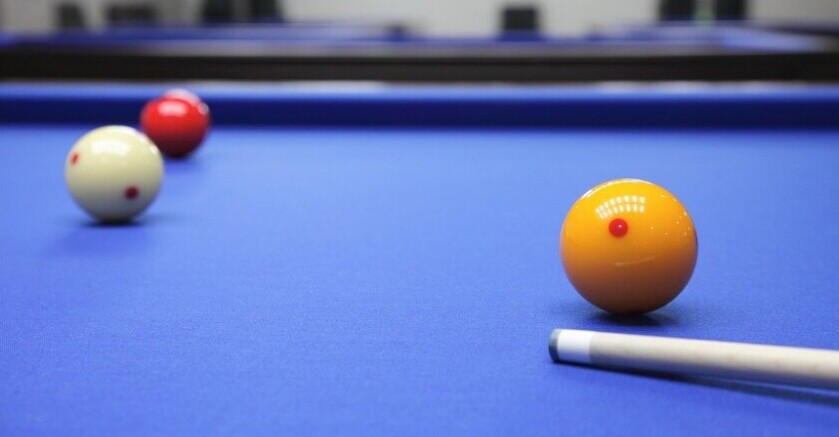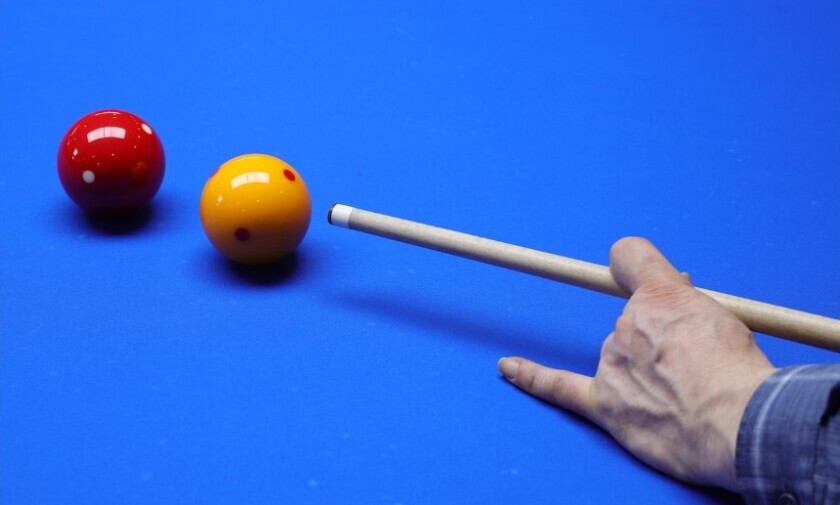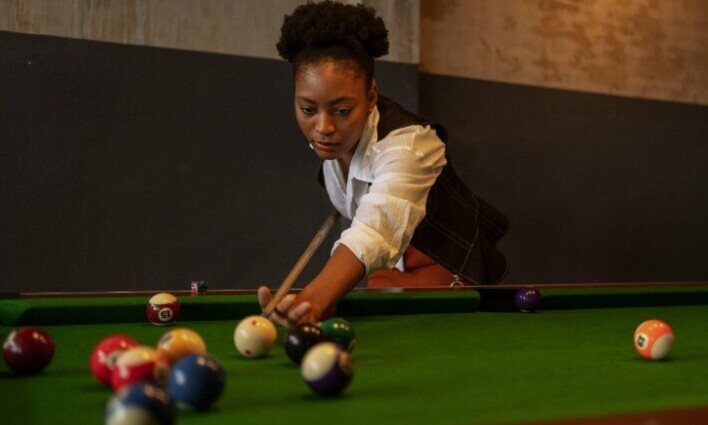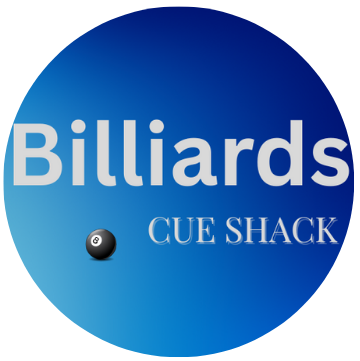 Spin, sometimes referred to as “English” in the world of pool, snooker, and billiards, is a skill that can fully change how you control the cue ball. If you’ve ever watched a skilled player make the cue ball move around the table just right for the next shot, that’s all about using spin in clever ways. Getting the hang of spin comes in handy, whether you want to avoid leaving yourself stuck behind another ball or lining up a straight shot for your next pocket. This guide will break down the basics, various types, and practical tips for using english/spin so you can really elevate your cue game.
Spin, sometimes referred to as “English” in the world of pool, snooker, and billiards, is a skill that can fully change how you control the cue ball. If you’ve ever watched a skilled player make the cue ball move around the table just right for the next shot, that’s all about using spin in clever ways. Getting the hang of spin comes in handy, whether you want to avoid leaving yourself stuck behind another ball or lining up a straight shot for your next pocket. This guide will break down the basics, various types, and practical tips for using english/spin so you can really elevate your cue game.
Quick Recommendation: Our blog is filled with tips and materials for your billiards experience. If you're seeking a pool cue to step up your spin game, we recommend PureX Technology Pool Cue with Low Deflection Shaft, Kamui Black Tip, Mz Multi-Zone Grip, Adjustable weight, & Turbo Lock Quick Release Joint Model: HXTC14
Why Spin Matters in Cue Sports
Spin gives you control over where the cue ball moves after making contact with another ball or cushion. This ability is crucial in games like pool, snooker, and billiards, since just pocketing balls isn’t enough if you keep getting stuck with difficult angles. By putting the right spin on your shot, you can steer the cue ball into better positions, set up escapes when you’re snookered, or even attempt some next-level cool trick shots for fun or showmanship.
Striking the cue ball in different spots (picture the cue ball as a clock face, with 12 o’clock at the top, 6 at the bottom, 3 and 9 on the sides) adds a variety of effects. The direction and strength of your shot, combined with the spin, will influence how the cue ball travels, rebounds, and either speeds up or slows down.
Types of Spin: The Basics You’ll Use Most
Every shot that isn’t perfectly centered on the cue ball adds some spin. Here are the main types you’ll use most often, each with their own role and result. Mixing them up based on your needs gives your cue ball movement more variety and control.
- Top Spin (Follow): Striking above center (12 o’clock) gets the cue ball rolling forward after hitting the object ball. This is perfect for driving the cue ball to the other end of the table or for keeping it out of trouble after making a pocket.
- Bottom Spin (Draw or Screw): Hit below center (6 o’clock) and the cue ball pulls back towards you after contact. This is how you draw the cue ball or make it stop dead (for “stun” shots) by hitting firmly with a touch of bottom. Stun shots are popular for stopping the cue ball exactly where you want it.
- Side Spin (English): Striking right or left of center (3 o’clock or 9 o’clock) spins the cue ball sideways. Side spin changes how the cue ball bounces off cushions by narrowing or widening the angles, and it can even alter how the cue ball reacts off the object ball. Side spin is also useful for steering the cue ball around traffic, but be careful—it’s easy to send the ball off course if you misjudge your aim.
Mixing It Up: Combined and Accidental Spins
Hitting the cue ball at spots between two main points (like 1 or 2 o’clock) blends top spin with a touch of side—a combination spin. This mix is how experienced players get more creative with cue ball control, adding curves or angles to shots that help them handle complex layouts. Blended spins are tricky at first but open doors for advanced strategies.
It’s also common to make accidental or “miscue” spin when your stroke wobbles, your tip’s not chalked, or the cue hits at an unintended angle. Unintended spin can ruin your shot and send the cue ball to places you didn’t plan, so keeping your cue movement smooth is extra important.
How Each Spin Type Changes Cue Ball Path
- Top Spin: The cue ball rolls ahead after hitting the object ball and keeps its momentum. It widens rebound angles off cushions, sending the ball further down the table.
- Bottom Spin: Pulls the cue ball backwards after making contact. This is ideal for clearing out of tough situations or making the cue ball halt on the spot. Bottom spin also flattens the ball’s path off cushions.
- Side Spin: Alters the cue ball’s angle off the cushions and can make the cue ball “swerve” or “throw” either before or after hitting. This gives you ways to avoid traffic on the table, but not getting your aim just right means side spin could lead to a miss.
- Combined Spin: Mixing spins (say, top and right) means the cue ball can curve or take unusual paths, letting you outmaneuver clustered balls. These creative spins are for players looking to level up their game.
Applying Spin: Where to Strike the Cue Ball
 . If you’re wondering where to start, imagine the cue ball as a clock:
. If you’re wondering where to start, imagine the cue ball as a clock:
- 12 o’clock – Top spin
- 6 o’clock – Bottom spin
- 3 o’clock – Right side spin
- 9 o’clock – Left side spin
The spaces in between give blended spins: for example, 1 o’clock is top-right.
To apply spin properly, focus on where your cue tip touches the cue ball and how your cue moves through the shot. Raising the butt of your cue slightly helps for top spin and keeping the cue level and aiming just below center helps for bottom spin. Practicing steady, straight strokes is important for reliable side spin.
Tips for Practicing Spin
- Start with Center Ball: Get comfortable striking the center of the cue ball first. Straight shots build a strong cue action that makes adding spin easier later.
- Add Spin Gradually: Introduce small amounts of spin to your shots and see what happens. Tiny adjustments can have a big impact on the cue ball’s path.
- Useful Drills: Place the cue ball in the table’s middle, use various spins, and aim at a cushion. Watch how it bounces off with each type (top, bottom, left, right), also trying shots with both soft and powerful strokes.
- Study What Happens: Watch each shot’s result and keep mental notes. Over time, you’ll be able to pick the right spin for the situation more quickly.
Quick Recommendation: Our blog is filled with tips and materials for your billiards experience. If you're seeking a pool cue to step up your spin game, we recommend PureX Technology Pool Cue with Low Deflection Shaft, Kamui Black Tip, Mz Multi-Zone Grip, Adjustable weight, & Turbo Lock Quick Release Joint Model: HXTC14
Other Factors Affecting Spin
- Shot Strength: More power can reduce the spin’s effect, while softer shots let the spin shape the ball’s movement more.
- Table Condition: Slick, new cloth and fresh cushions pass spin along really well, while slower cloth and older cushions soak up some of that effect. Try practice shots when you first play on a new table, so you know how it behaves.
- Cue Tip and Chalk: Make sure your tip is properly shaped and always chalked. A well-maintained tip allows you to put spin on reliably and avoid unwanted slip or miscue.
Common Spin Mistakes and How To Dodge Them
- Too Much Side Spin: New players use lots of side spin and often miss their pocket, or leave themselves stuck for the next shot. Solution: use only as much side as you need—less is more until you’re consistent.
- Accidental Off-Center Hits: Hitting outside the center by mistake is a common reason for miscue. Practice straight lines so your stroke is repeatable and accurate.
- Poor Chalk Use: Skipping the chalk routine or using a flat, dried out tip is asking for trouble. Chalk up before any shot that requires serious spin.
- Forgetting About Shot Power: Not adjusting your force for the spin and the distance means unpredictable cues. Try out different strengths during practice to understand how they interact with the spins you use.
Advanced Spin Tactics
 . Once you feel good about the basics, step up your game with these strategies:
. Once you feel good about the basics, step up your game with these strategies:
- Breaking Up Clusters: Use bottom or side spin when striking balls in a group to pull the cue ball back into the cluster or spread it for future shots.
- Curving Around Blockers: By adding extra side and a touch of top or bottom, you can “swerve” the cue ball to curve around a ball that’s in your line. This is a fun way to solve tricky positions or impress friends.
- Three-Cushion Escapes: In safety play or when snookered, side spin can alter how the cue ball bounces between cushions to help you hit the right ball, even from awkward spots.
Real-World Practice: Making Spin Work For You
- Set Up Real Situations: Practice the kinds of shots you struggle with, such as avoiding the scratch or locking in specific positions. The more you repeat real game scenarios, the more automatic your spin choices become.
- Film Your Shots: Recording short videos and replaying them lets you check where your technique can be tweaked. Sometimes even small corrections make a huge difference in how well you control spin on the cue ball.
- Watch How the Pros Do It: Whether you’re binge-watching tournaments or challenging a friend to focus on positional play, see how experienced players use spin to get themselves out of jams and set up easier shots.
Frequently Asked Questions About Spin
Question: What’s the best way to start learning spin?
Answer: Start with dead-center hits, then slowly try targeting different clock spots. Use drills to watch how the cue ball reacts with each spin and speed. Take your time and build up knowledge and confidence.
Question: Is side spin really that risky for beginners?
Answer: It just takes plenty of practice and a careful, straight stroke to use side spin well. Use just a little at first, keep your cue movement steady, and save the heavier side spin for simple shots once you’re more consistent.
Question: How much does table speed matter for spin?
Answer: Table speed can really change how spin behaves. Fast cloth helps spin last longer, while slower cloth will kill it quicker. Try a handful of shots to get a feel for the bounce and speed before any real match.
Final Thought: Spin as Your Secret Weapon
Learning to put spin on the cue ball transforms you into more than just someone who can pocket balls. Ultimately, you’ll unlock a new level of control and strategy in your game. Understanding top, bottom, and side spin, knowing how to mix them, and adapting for things like table speed opens up smarter, more creative play. Keep practicing your spins, be patient, and let your creativity come to life. That’s the path to real skill and confidence on the table.
Quick Recommendation: Our blog is filled with tips and materials for your billiards experience. If you're seeking a pool cue to step up your spin game, we recommend PureX Technology Pool Cue with Low Deflection Shaft, Kamui Black Tip, Mz Multi-Zone Grip, Adjustable weight, & Turbo Lock Quick Release Joint Model: HXTC14
